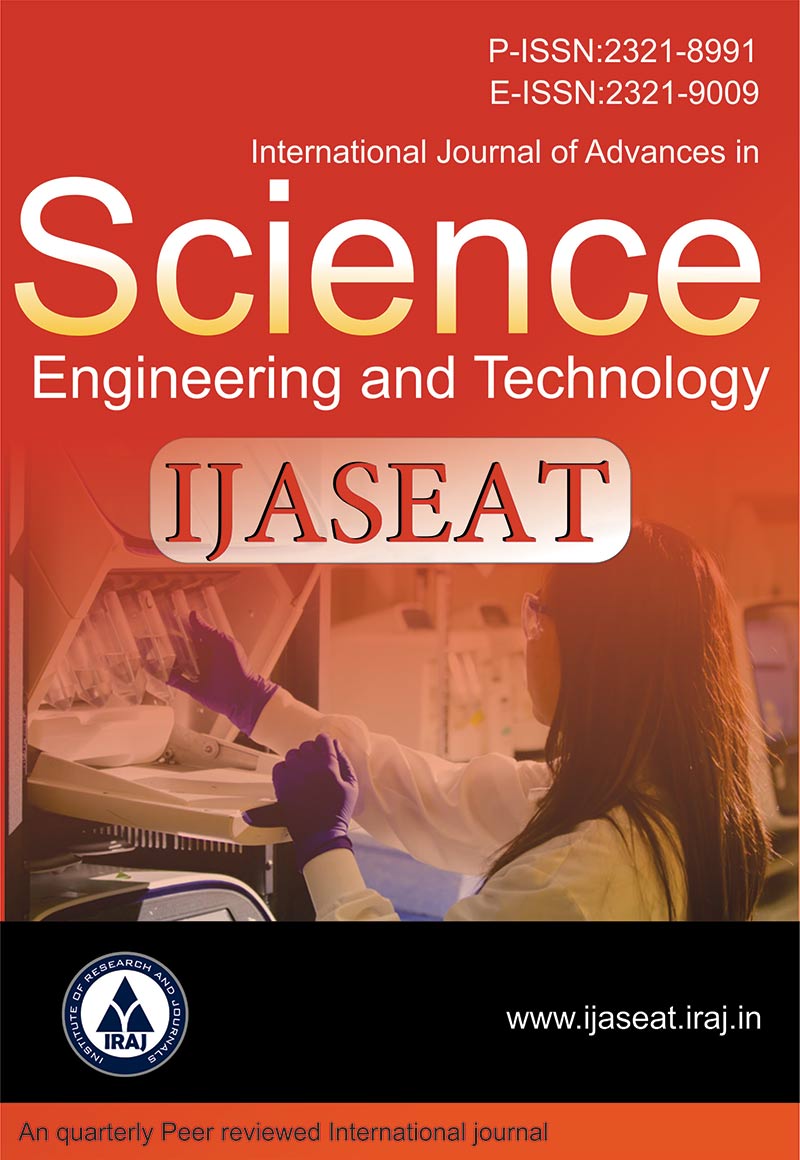Publish In |
International Journal of Advances in Science, Engineering and Technology(IJASEAT)-IJASEAT |
 Journal Home Volume Issue |
||||||||
Issue |
Volume-4,Issue-4, Spl. Iss-2 ( Dec, 2016 ) | |||||||||
Paper Title |
Important Uses of Leptadenia Pyrotechnica of Bikaner | |||||||||
Author Name |
Bhaboota Ram | |||||||||
Affilition |
Department Of Physics, Dungar College, Bikaner | |||||||||
Pages |
26-28 | |||||||||
Abstract |
Importance of composite materials is seen in all age of history and all ancient civilazations have used such materials. The main objective of this study is to prove the industrial use of local plants found in desert area. The study provides useful parameters for fiber industry so that material can be used properly for particular application and can competes the international market. By these parameters we try to develop understanding for usefulness of new natural fiber composite material with respect to exiting plastic material. The knowledge said parameters are useful for understanding the microscopic level study. The theory, models and equipment used are accepted under international standards. By the proposed work we investigate phase transformation, somr thermal properties of fiber reinforced phenol formaldehyde composites of Leptadenia pyrotechnica . It is planned to investihate strength, phase transformation and some thermo physical properties of compoite materials in respect of polymer made by plastics. Leptadenia pyrotechnica (Hindi : [khai) is the botanical name of a desert herb of the family Asclepiadaceae. It is known as himpin Hindi and Urdu, “Khipp”. Being highly brought-resistant, leptadenia pyrotechnica has played an important role in the desert afforestation programs. The herb khimpis a strong soil- binder and as such is one of the pioneer species in sand dune fixation. Only a few workers have done work on composite of fibers of desert plant and since plants are able to survive under extreme whether conditions, their composites are expected to provided good result . fiber reinforcement plastics are commonly used by modern electronic industry, and, since the disposal is not easy for such fiber reinforced plastics, the development of fiber reinforced plastics that harmonized with environment ie demanded [1]. Form such a viewpoint, some researchers have been studying to use the natural fiber, which it has a moderate mechanical property and is a green material as a reinforcement of the conventional fiber reinforced plastic [2,3] However, since generally the strength of natural fiber is lower than that of the glass fiber etc. , it is necessary to produce a green composite with higher fiber content and longer fiber length in order to obtain a natural fiber reinforced composite material with high strength. Therefore, it is important to develop a new creative technonlogy for the composite material that fills these demands [4]. Natural fiber composites are emerging as realistic alternatives to glass- reinforced composites in many applications. Natural fiber composites such as hemp foiber-epoxy, flax fiber-polypropylene (PP), and china reed fiber- PP are particularly attractive in automotive applications because of lower cost and lower density. [5]. Natural fibers traditionally have been used to fill and reinforce thermo-sets, natural fiber reinforced thermoplastics, especially polypropylene composites, have attracted greater attention duteto their added advantage of recyclability [6]. Natural fibers theoretically result in no net addition to CO2 emissions, Which natural fibers are obtained,appropriate atmospheric carbon dioxide during their growth,which is released during the combustion of natural fibers.hence incineration of natural fibers reinforced composites lead to positive carbon credits and lower global warming effect [7].the properties of natural fibers we want determine,keep in mind that one is dealing with natural producat with properties that are strongly influenced by their growing environment.temperature, humidity, the composition of the soil and the air all affect the height of the plant,strength of its fibers density, etc.and the way by which palnts, are harvested and processed result in a variation of propertied [8].’’ Crotalaria burhia’ is fount in desert of western rajasthan the fibers obtained in these have many advantages like eco-friendly, easy process-able, low cost,non toxic,abundance in nature, low density high srengh etc. Leptadenia comprises 4 species occurring from Africa to India. Leptadenia pyrotechnica is most of the time leafless, whereas the other 3 species, Leptadenia hastata (Pers.) Decne., Leptadenia arborea (Forssk.) Schweinf. (synonym: Leptadenia heterophylla (Del.) Decne.) and Leptadenia reticulata (Retz.) Wight & Arn. (synonym: Leptadenia madagascariensis Decne.) are leafy, twining shrubs. These 3 species form a species complex, and further taxonomic research might reveal that they should be considered as a single species. Leptadenia arborea occurs from West Africa east to Arabia. In Sudan a root decoction is drunk to treat gonorrhoea, constipation and colic. The roots are given to cattle and horses to treat flatulence. The plant is considered excellent forage for all livestock. Children eat the ripe fruits. The plant can be cultivated as an ornamental by training it as a vine over a pergola or wall. From the leaves, stems and fruits β-amyrin, α-amyrin, a mixture of campesterol and stigmasterol, pinoresinol, syringaresinol, leucanthemitol and ferulaldehyde were isolated. Syringaresinol has shown an inhibitory effect against acetylcholinesterase. The IC50 of syringaresinol was 200 μg/ml. | |||||||||
| View Paper | ||||||||||